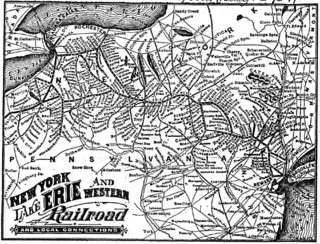
The Erie Railroad was a railroad that operated in the northeastern United States, originally connecting New York City — more specifically Jersey City, New Jersey, where Erie's former terminal, long demolished, used to stand — with Lake Erie. It expanded west to Chicago with its 1941 merger with the former Atlantic and Great Western Railroad, also known as the New York, Pennsylvania and Ohio Railroad. Its mainline route proved influential in the development and economic growth of the Southern Tier, including cities such as Binghamton, Elmira, and Hornell. The Erie Railroad repair shops were located in Hornell, and were Hornell's largest employer. Hornell was also where Erie's main line split into two routes, one north to Buffalo and the other west to Cleveland.

The Delaware, Lackawanna & Western Railroad was a U.S. Class 1 railroad that connected Buffalo, New York, and Hoboken, New Jersey, a distance of about 400 miles (640 km). Incorporated in 1853, the DL&W was profitable during the first two decades of the twentieth century, but its margins were gradually hurt by declining traffic in coal and competition from trucks. In 1960, the DL&W merged with rival Erie Railroad to form the Erie Lackawanna Railroad.
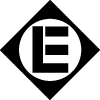
The Erie Lackawanna Railway, known as the Erie Lackawanna Railroad until 1968, was formed from the 1960 merger of the Erie Railroad and the Delaware, Lackawanna & Western Railroad. The official motto of the line was "The Friendly Service Route".

The Grand Trunk Western Railroad Company is an American subsidiary of the Canadian National Railway operating in Michigan, Illinois, Indiana, and Ohio. Since a corporate restructuring in 1971, the railroad has been under CN's subsidiary holding company, the Grand Trunk Corporation. Grand Trunk Western's routes are part of CN's Michigan Division. Its primary mainline between Chicago and Port Huron, Michigan serves as a connection between railroad interchanges in Chicago and rail lines in eastern Canada and the Northeastern United States. The railroad's extensive trackage in Detroit and across southern Michigan has made it an essential link for the automotive industry as a hauler of parts and automobiles from manufacturing plants.

Conrail was the primary Class I railroad in the Northeastern United States between 1976 and 1999. The trade name Conrail is a portmanteau based on the company's legal name, and while it no longer operates trains, it continues to do business as an asset management and network services provider in three Shared Assets Areas that were excluded from the division of its operations during its acquisition by CSX Corporation and the Norfolk Southern Railway.
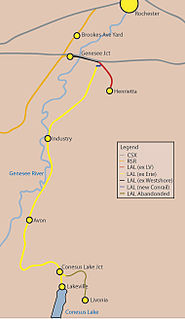
The Livonia, Avon and Lakeville Railroad is a short line railroad that operates in Livingston County and Monroe County in New York, United States. The railroad interchanges with CSX at Genesee Junction in Chili, New York, the Rochester and Southern Railroad (RSR) at Genesee Junction and the RSR's Brooks Avenue Yard in Gates, New York, and with the Rochester & Genesee Valley Railroad Museum at Industry, New York. Their primary freight consists of food products - grains and corn syrup. In 1997, the Livonia, Avon and Lakeville Railroad was selected as Short Line Railroad of the Year by industry trade journal Railway Age. The LAL is also the parent company for both the Bath and Hammondsport Railroad and Western New York and Pennsylvania Railroad.

The Delaware–Lackawanna Railroad is a shortline railroad operating in Northeastern Pennsylvania, especially the Scranton area.
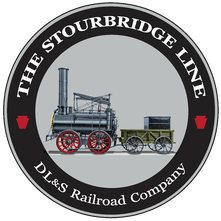
The Stourbridge Line is a shortline railroad that operates 25 miles (40 km) of former Erie Lackawanna Railroad between Honesdale and Lackawaxen, Pennsylvania where it connects with Norfolk Southern Railway. The line was previously owned by the Lackawaxen-Honesdale Shippers Association and operated under contract by Robey Railroads. The operation was contracted to the Morristown & Erie Railway in January 2009; service ended in 2011. Service was resumed by the Delaware, Lackawaxen & Stourbridge Railroad (DL&S) on May 9, 2015.
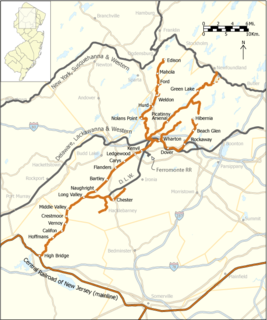
The High Bridge Branch was a branch line of the Central Railroad of New Jersey (CNJ) that started in High Bridge, New Jersey at a connection with the CNJ main line and continued north to iron-ore mines in Morris County. The High Bridge Branch line followed the South Branch of the Raritan River for much of its duration.
B&H Rail Corporation, formerly the Bath & Hammondsport Railroad, is a Class III shortline railroad. Initially the line served the communities of Bath, New York and Hammondsport, New York. In Bath, the railroad connected with the Erie Railroad and the Delaware, Lackawanna and Western Railroad. In 1996, the railroad was leased by the Livonia, Avon and Lakeville Railroad.

Cleveland has been and continues to be deeply rooted in railroad history.

Paterson is a New Jersey Transit commuter rail train station located on an elevated viaduct above Market Street in downtown Paterson, New Jersey. The railway through the station is double tracked, for north and south traffic on the NJT Main Line.
The Indian Creek Railroad is a short-line railroad in Madison County, Indiana, United States. The 4.55-mile (7.32 km) line is owned by Kokomo Grain Company, an agricultural products and services company, and connects their property at 40°11′30″N85°44′40″W with the Norfolk Southern Railway's Marion Branch in northern Anderson, carrying outbound grain and inbound fertilizer.

The Central New York Railroad is a shortline railroad operating local freight service along ex-Southern Tier Line trackage in the U.S. states of New York and Pennsylvania. The line begins at Port Jervis, following the West Branch Delaware River to Deposit and the Susquehanna River from Lanesboro, where it crosses the Starrucca Viaduct, to Binghamton. It is a subsidiary of the Delaware Otsego Corporation, which also owns the New York, Susquehanna and Western Railway, operator of through trains over the line.

The Western New York and Pennsylvania Railroad is a short-line railroad that operates freight trains in Western New York and Northwest Pennsylvania, United States. The company is controlled by the Livonia, Avon and Lakeville Railroad, with which it does not connect. It started operations in 2001 on the Southern Tier Extension, a former Erie Railroad line between Hornell and Corry, owned by the public Chautauqua, Cattaraugus, Allegany and Steuben Southern Tier Extension Railroad Authority (STERA). Through acquisitions and leases, the line was extended from Corry to Meadville in 2002 and to Oil City in 2006, and in 2007 the WNY&P leased and sub-leased portions of the north-south Buffalo Line, a former Pennsylvania Railroad line mostly built by a predecessor of the defunct Western New York and Pennsylvania Railway. The two lines cross at Olean.
The following is a brief history of the North American rail system, mainly through major changes to Class I railroads, the largest class by operating revenue.
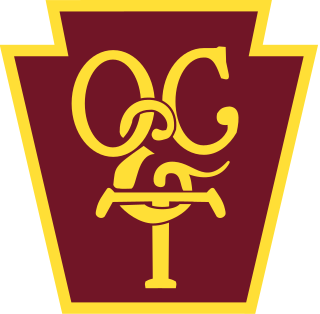
The Oil Creek and Titusville Railroad is a tourist railroad that runs from Titusville to Rynd Farm north of Oil City in the U.S. state of Pennsylvania. The Oil Creek and Titusville Lines is the designated operator of the railroad, as well as the freight carrier on the line.
The Ashland Railway is a Class III railroad shortline railroad operating within North Central Ohio and based in Mansfield, Ohio. Since its inception in 1986, Ashland Railway has grown to provide service 24 hours a day 7 days a week along 55 miles of track in two segments, to industries within Ashland, Huron, Richland and Wayne counties. ASRY interchanges with the Norfolk Southern Railway in Mansfield, the Wheeling & Lake Erie Railway in Plymouth and CSX Transportation (CSXT) in Willard. The line runs southeast from Willard through Plymouth and Shelby, to Mansfield. From Mansfield the line runs northeast through Ashland and terminates in West Salem.

Morristown & Erie Railway is a short-line railroad based in Morristown, New Jersey, chartered in 1895 as the Whippany River Railroad. It operates freight rail service in Morris County, New Jersey and surrounding areas on the original Whippany Line between Morristown and Roseland, as well as the Morris County-owned Dover & Rockaway Branch, Chester Branch, and High Bridge Branch. The M&E also operated the Maine Eastern Railroad from November 2003 to December 31, 2015.

The Lehigh Line is a railroad line in central New Jersey and northeastern Pennsylvania. It is owned and operated by the Norfolk Southern Railway. The line runs west from the vicinity of the Port of New York and New Jersey (via Conrail's Lehigh Line to the Susquehanna River valley at the south end of the Wyoming Valley Coal Region. Administratively it is part of Norfolk Southern's Harrisburg Division and is also part of the Crescent Corridor. As of 2016 the line is freight-only, although there are perennial proposals to restore passenger service over all or part of the line.
















